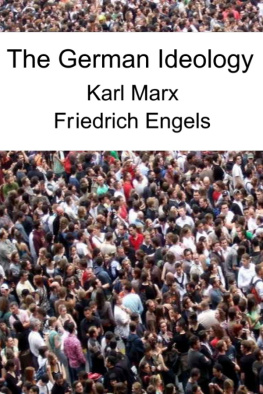IN HUMBOLDTS SHADOW
In Humboldts Shadow
A TRAGIC HISTORY OF GERMAN ETHNOLOGY
H. Glenn Penny
PRINCETON UNIVERSITY PRESS
PRINCETON & OXFORD
English language copyright 2021 by Princeton University Press
Originally published as Im Schatten Humboldts by H. Glenn Penny Verlag C.H.Beck oHG, Mnchen 2019
Princeton University Press is committed to the protection of copyright and the intellectual property our authors entrust to us. Copyright promotes the progress and integrity of knowledge. Thank you for supporting free speech and the global exchange of ideas by purchasing an authorized edition of this book. If you wish to reproduce or distribute any part of it in any form, please obtain permission.
Requests for permission to reproduce material from this work should be sent to permissions@press.princeton.edu
Published by Princeton University Press
41 William Street, Princeton, New Jersey 08540
6 Oxford Street, Woodstock, Oxfordshire OX20 1TR
press.princeton.edu
All Rights Reserved
Library of Congress Cataloging-in-Publication Data
Names: Penny, H. Glenn, author.
Title: In Humboldts shadow : a tragic history of German ethnology / H. Glenn Penny.
Other titles: Im Schatten Humboldts. English
Description: Princeton, New Jersey : Princeton University Press, 2021. | Includes bibliographical references and index.
Identifiers: LCCN 2020049825 (print) | LCCN 2020049826 (ebook) | ISBN 9780691211145 (hardback) | ISBN 9780691216454 (ebook)
Subjects: LCSH: EthnologyGermanyHistory. | EthnologistsGermanyHistory. | Ethnological museums and collectionsGermanyHistory. | Humboldt, Alexander von, 17691859Influence.
Classification: LCC GN308.3.G3 P4613 2021 (print) | LCC GN308.3.G3 (ebook) | DDC 305.800943dc23
LC record available at https://lccn.loc.gov/2020049825
LC ebook record available at https://lccn.loc.gov/2020049826
Version 1.0
British Library Cataloging-in-Publication Data is available
Editorial: Fred Appel and James Collier
Production Editorial: Kathleen Cioffi
Jacket Design: Amanda Weiss
Production: Erin Suydam
Publicity: Kate Hensley and Kathryn Stevens
Copyeditor: Anne Cherry
Jacket image: iStock
ILLUSTRATIONS
.Kihawahine
.Kihawahine with other objects collected by Arning in Hawaii
.Portrait of Bastian as a young man
.King Kamehamehas feather cloak
.Map of Bastians travels in Southeast Asia
.Axe Heads
.Map of Bastians travels in Ecuador
.Map of Bastians travels in Colombia
.Map of Bastians travels in Guatemala
.The canoe in the Berlin Museum fr Vlkerkunde
.The crest pole in the atrium of the Berlin Museum fr Vlkerkunde
.Objects from Jacobsens venture
.The museums opening in 1886
.The entryway through the vestibule and into the new Berlin Museum fr Vlkerkunde
.Outside the new Berlin Museum fr Vlkerkunde
.Bronze plaque
.Carved ivory tusks
.The box
.Termer and the snake
.Map of Termers travels, 192529
.Termer on the way to climb his first volcano
.Termer with children and his camera in Chichicastenango
.Searching for folk costumes in Guatemala
.Termer on a finca with the Lengemanns
.Map of Termers research expedition among the Pipiles, 1938
.Termer at his typewriter among ruins
.The first piece in the Mann collection, a wedding huipil from 1850 that they received from their cook
.The Yupik Flying Swan mask
.The Yupik Flying Swan mask in the 1926 cabinet
.The Dahlem entryway
.Boxes in Leipzig
.Raising the nine-meter-long crest pole into the museum
.The Yupik Flying Swan mask before restoration
.The 1926 Schausammlung
.The sculptures from Santa Luca Cotzumalguapa as a high point in a new Schausammlung in 1970
.The Yupik Flying Swan mask after restoration
.The Buddha statue centered in the entryway to Bastians museum
ACKNOWLEDGMENTS
THIS BOOK WAS not planned. I arrived at the Wissenschaftskolleg zu Berlin (Institute of Advanced Study) in fall 2017 with a completely different project in mind. Soon afterward, however, an overwhelming number of peoplecurators, journalists, museum directors, and numerous scholarsbegan contacting me as a result of the controversies swirling around the Humboldt Forum, a new exhibition venue in the heart of Berlin named after the brothers Alexander and Wilhelm von Humboldt, asking me to intervene. At first, I demurred, staying focused on questions of diaspora and emigration. After a few months, however, a number of people changed my mind. First and foremost, the indefatigable Sarah Ehlers went out of her way to bring me up-to-date on the public debates about colonialism, cosmopolitanism, and ethnology, keeping me abreast of the latest interventions and protests against the efforts to draw collections from multiple museums, and particularly the Berlin Ethnological Museum, into the Humboldt Forum. She was incredibly encouraging and wise. Daniel Schnpflug instructed me on the virtues of writing for a general audience, the best way to intervene in such debates, and he introduced me to my agent, Barbara Wenner, who made this book possible. She immediately saw the importance of the project and went to great lengths to help me transform my tortured academic prose into something palatable for lay readers. She also introduced me to Detlef Felken, my editor at C. H. Beck, who shared her enthusiasm and quickly took on the project. That was a formidable group of backers, and the combination of their efforts and support made this a relatively easy and incredibly rewarding book to write. My greatest thanks, however, are due to my wife, Beatrice Curio-Penny, a biologist, who never tired of reminding me that the stories of the people I had long thought about would interest a broad audienceif I would make the effort to write for them. I was able to do that, in large part, by writing for and with her. She read the entire manuscript multiple times, pointing out the references that were too obscure, the examples that were too many, and the need for details about people and places that I too often assumed readers would know. Working with her on this project made it one of the most rewarding of my career.
In the end, however, it was really my longtime friend Greg Johnson, whom I met when we were graduate students in Berlin, who was the catalyst that led me to write this book. In the fall of 2017, he asked me to attend a meeting at the Berlin Ethnological Museum. That meeting ultimately spurred me to wade into the complexities unleashed by the debates around the Humboldt Forum, and I remain grateful for that experience and for his inspiration. Any inaccuracies or limitations in the book, however, are my responsibility alone.
Fred Appel, my editor at Princeton University Press, was also inspirational. He saw the virtues of pursuing an English-language version of the book and gave me the chance to help update it as well. His guidance has been impressive and essential. I am grateful to him for his efforts and for the recommendations of the anonymous readers.







